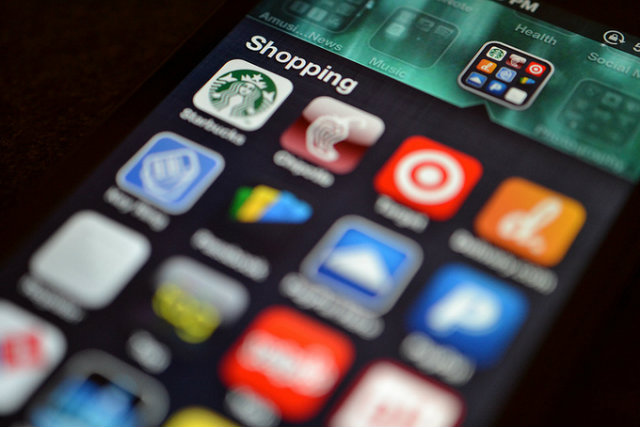
We have talked a lot lately about the retail customer experience: a revolution that is questioning every certainty retailers had acquired. Disruptive technologies rewrite from the foundations the connection between brands and customers, starting from the very nature of the physical point of sale. These tech trends will only speed up from 2015 on, and shopping as we knew it will never be the same. Let's take a look at the top 5 tech innovations that are reshaping the retail customer experience.
For decades retailers and CPGs have used the same formula for growth: open new stores to expand their customer base, and promote their product with paid content. That was a straightforward format they could follow with almost mathematical precision to increase sales. But then mobile devices came in to change the rules of shopping: Internet and smartphones have changed the industry with a much deeper impact than most retailers think, and the customer has evolved accordingly. This is what analysts have called the dawn of the Age of the Customer.
Today, more than a half of active buyers search for product/service information online, making their purchase decisions in front of a screen rather than in-store. Add the E-Commerce outbreak (rapidly shifting to Me-Commerce) to the equation and you will see why disruptive technologies have dramatically lessened the need for physical stores as we know it.
Many retailers’ instinctive reaction to the mobile-mind shift challenge is to close under-performing stores, but the anxiety for operational efficiency only delays the resolution of the problem. Mobile it gives, mobile it takes away: if you're a retailer, you can't help but to recenter yourself, at least to survive the digital transformation or, better, drawing a competitive advantage. These are 5 technologies to improve your digital customer experience.
-
Geo-fencing: the growing sophistication of mobile marketing makes it possible to use localization to drive foot traffic (geo-fencing), but also to improve the overall store experience (geo-targeting). The road to personalized shopping (turning desires into needs) starts from context-aware content - offers, communications, deals - iBeacons, widgets and push notifications.
-
Virtual reality: you may think that futuristic devices like the Oculus Rift or other virtual reality headsets are only made for the gaming & entertainment industry. Said that game mechanics are extremely useful for retail strategies, the store improvement also involves the merging of digital and physical environments with 3D imaging, touch screens, body-motion sensors and virtual worlds.
-
Internet of Things: the interconnection of smart objects will soon affect retail strategies, with the potential to revolutionize the way companies plan, develop, produce, distribute and sell products. The Internet of Things will imply product management, supply chain and customer interaction: the communication between intelligent devices will allow retailers to reinvent the selling process and loyalty dynamics (i.e. using gamification).
-
Mobile Payments: the sale moment becomes more and more 'dematerialized' and ‘demonetized’. In the near future we will probably say goodbye to cash and even credit cards. Apple Pay is at the forefront of this evolution, raising NFC to a whole new level. The connection between mobile wallets and personal devices (smartphones, smartwatches and all wearables) has the potential to unify the mobile payment market with a secure one-touch system that speeds-up transactions.
-
Real-time Analytics: the profusion of customers’ information, created by personal mobile devices, makes data mining necessary to build a really efficient digital customer experience. Connecting Big Data platforms to a real-time analytics dashboard, retailers could finally tailor-make strategies and foster engagement, loyalty and retention.
A multi-channel world demands retailers to take a totally different approach, that begins with a reassessment of the role of the point of sale. This is what an innovative retail customer experience is all about: a seamless shopping experience no matter what channel, device or format customers use for their purchase.
Every trip, even the longest, starts from the first step. And in this journey towards the most effective Digital Customer Experience, your stakes are higher than ever.



 Your magnifing glass to deeply understand your users and increase the value of each relatonship.
Your magnifing glass to deeply understand your users and increase the value of each relatonship. Listen to the voice of your customers deeply to understand what they truly want.
Listen to the voice of your customers deeply to understand what they truly want. The Lead Generation Platform to get leads from anonymous traffic on your website.
The Lead Generation Platform to get leads from anonymous traffic on your website.  Understand the behavior of people in physical spaces and monitor safety requirements.
Understand the behavior of people in physical spaces and monitor safety requirements. The Digital Commerce Platform designed to follow the most modern technological standards..
The Digital Commerce Platform designed to follow the most modern technological standards.. The XReality platform to tell brand and product stories by connecting physical and digital worlds.
The XReality platform to tell brand and product stories by connecting physical and digital worlds. Points, rewards, levels, badges, missions: a world of nudges to nurture your customer community.
Points, rewards, levels, badges, missions: a world of nudges to nurture your customer community. Discover all the other solutions!
Discover all the other solutions!









